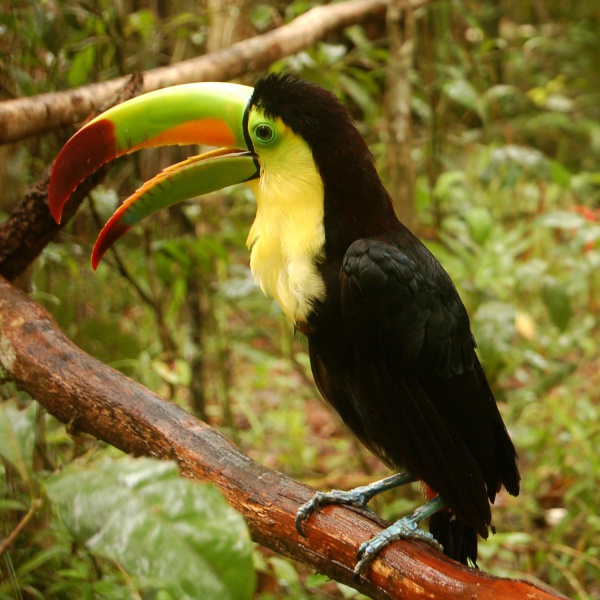Facts About Keel-billed toucan
The keel-billed toucan, also known as the sulfur-breasted or rainbow-billed toucan, is a mesmerizing bird native to Latin America. This vibrant species is the national bird of Belize and thrives in the tropical jungles extending from southern Mexico to Colombia. As an omnivore, its diet encompasses a variety of fruits, seeds, insects, invertebrates, lizards, snakes, and even small birds and their eggs.
There are two recognized subspecies of the keel-billed toucan, each inhabiting distinct geographic ranges. What truly distinguishes this bird is its large, colorful bill, which is remarkably striking and constitutes a significant portion of its body length. The toucan's plumage is primarily black, complemented by a bright yellow neck and chest, blue feet, red tail feathers, and a green bill adorned with red and orange accents.
Equipped with zygodactyl feet—two toes facing forward and two backward—these toucans are adept at navigating tree branches. They typically roost in tree cavities and are known for their social behavior, often observed living in groups. They engage in playful activities such as dueling with their bills and tossing fruit to one another. During the breeding season, both parents share the responsibilities of caring for the eggs and chicks, with an incubation period typically lasting between 15 and 20 days.
While fruits constitute the majority of their diet, keel-billed toucans also consume insects, eggs, nestlings, and lizards. In captivity, they require a fruit-heavy diet and are susceptible to hemochromatosis, a condition caused by excessive iron intake. Despite their adaptability to human-altered environments, these toucans face threats from hunting for their meat and beaks, which has led to a decline in their population. Nevertheless, the International Union for Conservation of Nature (IUCN) currently classifies them as a species of Least Concern, indicating that they are not at immediate risk of extinction.

 Nicaragua
Nicaragua